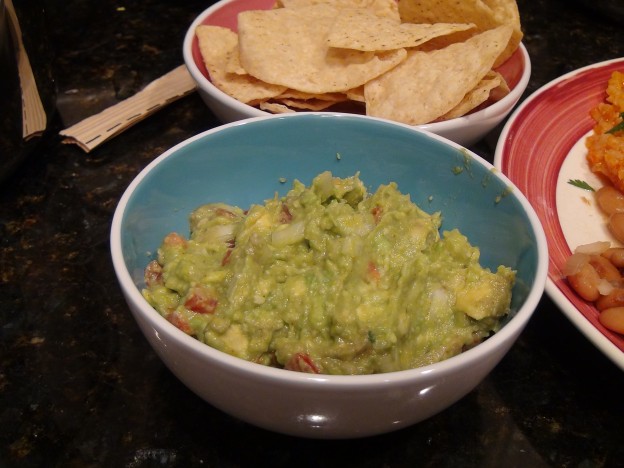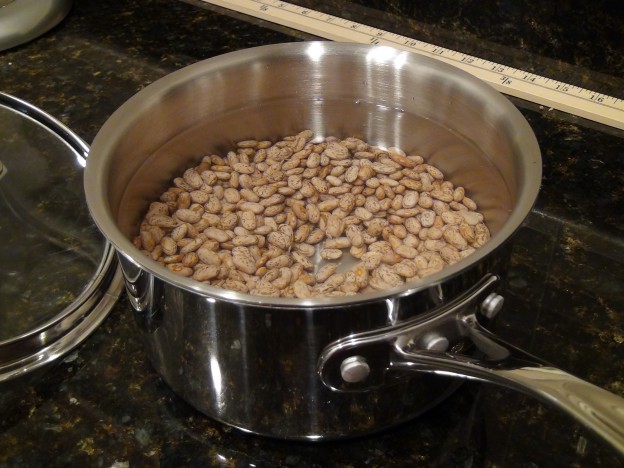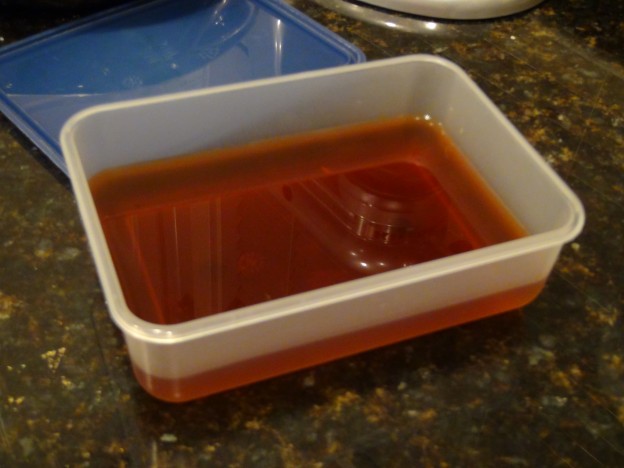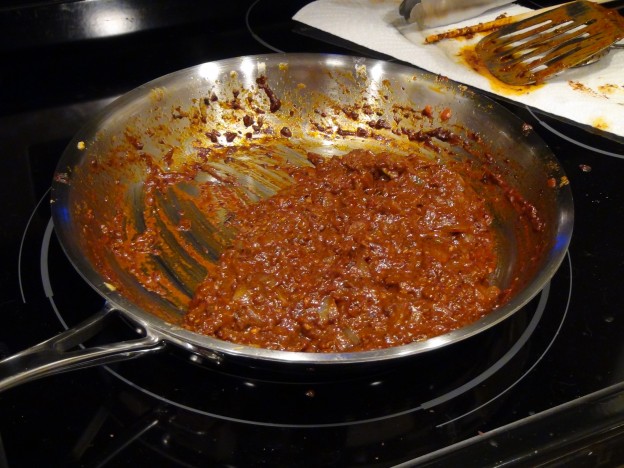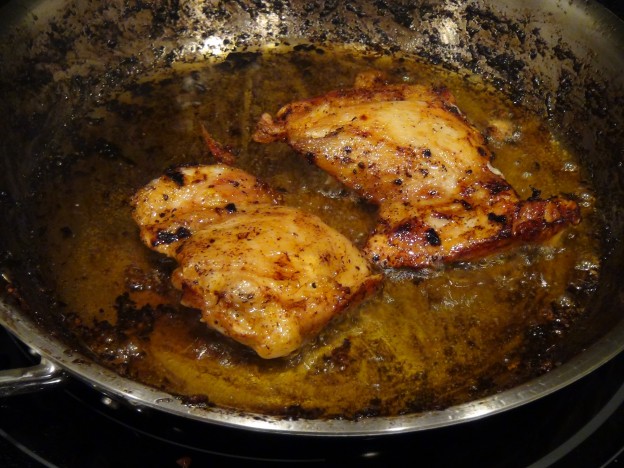April 5-6, 2014 – Some backstory: My friends know I’m really into cooking, that I’m a chocoholic, and that I frequently combine strange flavors. (The famous example being the burger with chocolate sauce. But that’s a story for another day.) At least 2 different friends indepdendently told me I should check out mole and learn how to make mole. (The Mexican food, not the furry animal.) So I did.
The first problem is that very few cooking schools in the Seattle area know how to make mole. Hipcooks is apparently the only cooking school in town that has a class featuring mole. (Sadly, the cooking school itself isn’t that great.)
But what’s the point of making mole if I can’t make a whole Mexican dinner. So let’s start our story with the appetizer, guacmole.
I got the recipe from Good Eats (also available on the Food Network website). I won’t go into too much detail about how it’s made. It’s pretty straightforward. And you can see from the “cast photo” what’s in it.
The hardest part is finding a perfectly ripe avocado. An avocado that’s too stiff will taste awful. An avocado that’s too mushy will be, well, mushy. You’ll need to get your hands on the avocado and find the avocados that are neither too stiff nor too mushy, with just a little bit of give when you squeeze them. For those of you in the Seattle area, I recommend checking out Uwajimaya (in addition to Asian ingredients, they also have superb produce and seafood).
Also, I don’t know why the recipe only calls for 1 lime. Maybe limes in Good Eats land are larger. But I’d recommend using 2 limes instead. (Or at least having a second lime on hand, so you can add more lime juice if needed.)
Lastly, the flavors meld and mellow after resting for a few hours (which is what you want to do to smooth out the flavors). And half a jalapeno is really awkward if you have no uses for the rest of the jalapeno. So throw in the whole jalapeno. (With seeds and stems removed, of course.)
Also, with the inclusion of cilantro, I have turned to the dark side of cooking.
Next step, beans. Because rice and beans are a staple in Mexican cooking. (It’s an odd source for a recipe, but I got the recipe from eHow. Beans take a long time, and the first step is to soak them overnight. It’s hard to see in the picture, but after soaking, they doubled in volume.
Then as the recipe says, saute some onions and garlic in lard, add the beans, chicken stock (this would later prove to be a mistake, more on that later), and bay leaves, and simmer for a few hours.
The recipe makes a lot of beans. I estimate that it’s enough beans to serve 8 people. I ate the beans over 3 days across 5 meals. It’s more beans than one man should ever eat in such a short period of time. Also, pinto beans are weird. Raw pinto beans are spotted. Cooked pinto beans are solid brown.
Like I said before, cooking the pinto beans in stock instead of water proved to be a mistake. I did some research and found this article. To summarize, rinse beans thoroughly, soak in a little bit of baking soda, cook with epazote, and cook without salt (until the end of cooking). You’ll thank me later. (I’ll spare you the details.)
I considered frying (re-frying) the beans, but ultimately decided against it since Mexican dinner is already fairly labor intensive.
The other part of “rice and beans” is rice. So I decided to make some Mexican style rice. I borrowed my recipe from AllRecipes.com. Except instead of veggie oil, I used lard (the traditional cooking fat of Mexico). Also, I don’t know what kind of rice Mexicans eat. So I just used Calrose rice.
Overall, I’m not happy with the recipe. The rice is too soupy and too tomatoey. Next time, I’ll just stick some rice in the rice cooker. It’s less traditional, but less labor intensive, and I’d be happier with the results.
And now for the main event: mole. According to the Hipcooks website, this is a red mole. The recipe calls for a pasilla chili, mulato chili, ancho chili, and a fresh serrano chili (not pictured). At first, I tried to find the dried chilis at Whole Foods, but all I found was a 2oz pack of ancho chilis, which cost $5.99. Contrast with the Mexican grocery store, which had all the Mexican chilis, for only $1.99 per 2oz pack. Plus, the quality of the chilis at the Mexican grocery store was much better. (For those in Bellevue, check out La Superior. Also, someone remind me to write a review for La Superior.)
From my understanding, it’s traditional in Mexican cuisine to bloom dried spices before using them. Which means to toast them in a skillet for a few minutes. Next step is to soak to rehydrate the chilis.
And then toss in the food processor and turn it into paste. We call this the “chili paste”. 3.5 oz of chili-y goodness.
Some moles have a sweet component in addition to the spice component. At Hipcooks, we had both a chili paste and a nut paste (although the nut paste proved to be very unpopular). But for completeness, I still wanted to make a little bit of nut paste. In case it’s hard to see in the photo, I used coriander, sesame seeds, cumin, garlic, pine nuts, almonds, and raisins. The recipe also called for pumpkin seeds, but due to my failure to read, I bought pumpkins instead. Oops!
And food processor that and pulverize. 1.75 oz of, um, nuttiness. And to make the paste actually come out pasty and not just a pile of crumbs, I added a little bit of the chili water I used to rehydrate the chilis. Speaking of chili water…
I saved the chili water, so if I need more liquid for making the final mole sauce, I can use this.
So I made the chili and nut pastes the night before (Saturday) to save time on cooking day. The next day (Sunday), after the guac, the beans, and the rice, I dove head first into making mole.
The recipe calls for onions, tomatoes, and tomatillos. I don’t know if this is the Mexican equivalent of mirepoix, but in this recipe, it behaves as mirepoix. You might be asking, what the hell is a tomatillo? Well, let’s say on Thursday, I had no idea what a tomatillo is. And by Sunday, I was cooking with it. Oh, and garlic. I put garlic in everything.
The recipe also said to saute the mirepoix in olive oil. But from my understanding, Mexicans use lard for cooking. So I switched to lard too.
Then, I added some star anise and a cinnamon stick, and a sprinkle of wine to draw out the flavors. The recipe calls for a white wine, and Sizzleworks says the best white wine to cook with is Yellow Tail Chardonnay (Australian, unoaked). Except I have a wine problem. (Not the kind of wine problem you think.) I can’t taste wine. It all tastes like burn to me. So I use a bit of wine to cook, and then I have a bunch of leftover wine I need to get rid of. So next time, I think I’ll just stick with the Madeira instead.
Next is to start adding the pastes. I used all of the chili paste I made, but only half of the nut paste. (I have a sweet tooth, but ironically, I don’t like moles that are overly sweet.) I did note that I had way too much mirepoix though.
I also added about a tablespoon of each of the chili water and of the reconstituted stock. Although given that I’m not using stock for the beans, and I’m not making the “Mexican style” tomato rice anymore, using 1 Tbsp of chicken stock just isn’t worth it. Next time, more chili water will do the trick.
At first, I thought the mole tasted too tomatoey, but then I added 0.5 oz of Ghirardelli 60% baking chocolate, all the flavors came together and it was good. (I’m wondering if I should go all the way up to 90% to get more chocolate and less sugar, though.) Then, correct the seasonings with salt and some Frank’s hot sauce. (Yes, I even put Frank’s in this.) And maybe next time, I should add some black pepper and more cumin.
Am I going to eat sauce straight up? Well, I probably shouldn’t. Plus, the meal should have some meat. So I took some leftover chicken thighs (that I defrosted last night), and fried them up in, you guessed it, more lard.
Overall, it was a delicious meal. The guac was good and avocado-y. (The chips were not home-made. I was too lazy to deep fry things.) The mole was nice and flavorful. The rice and beans could have used more seasoning, but overall they held the meal together, the way carby and starchy things are supposed to.
One thing to note is my mole is thick and chunky. One part of it is I used too much mirepoix. (Or because restaurants run their mole through a blender to smooth it out.) But really, I just have a history of making really thick sauces. Some day, I might personalize this with some Chinese flavors, like Sichuanese peppercorns or Chinese 5-Spice (which incidentally includes both star anise and Sichuanese peppercorns). But I’ll stick with the basic recipe for now just to make sure I have a good grasp on the basics.
This was also a good learning experience. It took 7.5 hours to make everything, but I learned a lot about Mexican cooking. I think I can streamline the process to make things go by faster next time, especially since I’m skipping the rice. (Although I’m also planning on baking a pastel tres leches, so that might make up for it.)
There were a lot of leftovers. These were my next 4 meals. Like I said before, more beans than a man should eat. (Apparently, microwaving the mole brings out the chili flavors more. And the red color.)


